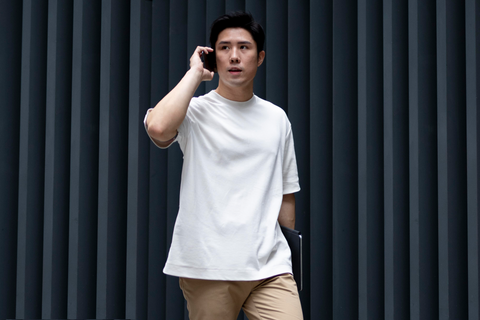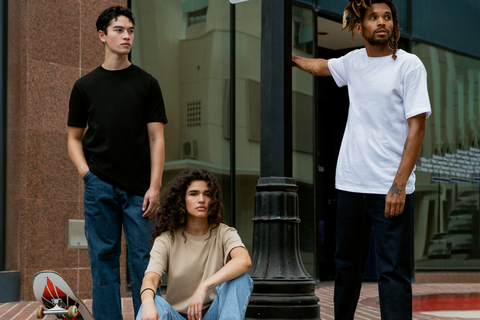Transforming Trends: The Journey of Blank Apparel
Posted by ARTEMIO NERVEZ JR

Blank apparel, often viewed as the canvas of the fashion world, has evolved significantly over the years, transitioning from a basic necessity to a style statement in its own right. This article delves into the history, significance, and evolving trends of blank apparel, exploring how it has become a staple in both the wardrobes of everyday people and the collections of avant-garde designers.
The Historical Context
Originally, blank apparel served a purely functional purpose. Simple T-shirts, sweatshirts, and hoodies were primarily used for comfort and ease, often worn in casual or work-related environments where embellishments were unnecessary or impractical. However, the rise of screen printing in the mid-20th century marked the beginning of a transformation for these plain garments, turning them into tools for expression, advertising, and art.
The Rise of Minimalism
As fashion cycles moved towards minimalism in the late 20th and early 21st centuries, blank apparel began to be appreciated for its simplicity and versatility. The fashion industry started to recognize the power of a blank canvas, which allows the wearer to project their style and personality without the interference of pre-determined patterns or logos. This shift aligned perfectly with the growing desire for personalized fashion and the DIY ethos prevalent among younger generations.
A Tool for Expression

With the advent of technology and social media, blank apparel has found a new role as a medium for personal and political expression. Social movements and individual activists often use blank shirts to convey messages through slogans and designs, utilizing their simplicity as a backdrop that highlights the message. This has turned blank apparel into a powerful tool in rallies, protests, and campaigns, emphasizing its role not just in fashion but in societal discourse.
The Sustainable Choice
In today's environmentally conscious world, blank apparel is often chosen for its sustainability. Many brands focus on producing eco-friendly, unadorned garments that promote ethical consumption. These pieces are made with organic materials, involve less processing, and have a timeless quality, reducing the need for frequent replacement and thus contributing to a more sustainable fashion industry.
Blank Apparel in High Fashion
More recently, blank apparel has made its way into high fashion, with designers using plain garments as the foundation for exploring shape, structure, and form without the distraction of prints or heavy detailing. This trend has been evident on fashion runways around the world, where designers have showcased collections that focus on the cut and fabric of the garment, rather than intricate designs, bringing a new appreciation to the inherent beauty of simplicity.
The Future of Blank Apparel

As we look to the future, the role of blank apparel is set to grow even further. With increasing emphasis on minimalistic design, sustainable choices, and personal expression, these basic pieces will continue to evolve. Whether as a statement of fashion, a medium for messages, or a commitment to sustainability, blank apparel remains a fundamental, yet profound element of our wardrobe.
In conclusion:
The journey of blank apparel from basic to bespoke reflects broader changes in our cultural and fashion landscapes. It underscores a shift towards minimalism, personal expression, and environmental responsibility, proving that sometimes, the simplest option can also be the most impactful.
At VS Tees, the evolution of blank apparel from fundamental to custom-tailored showcases the sweeping transformations within our cultural and fashion environments. It highlights a movement toward minimalism, individual expression, and environmental consciousness, demonstrating that often, the most straightforward choice can also be the most influential.





